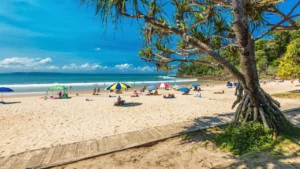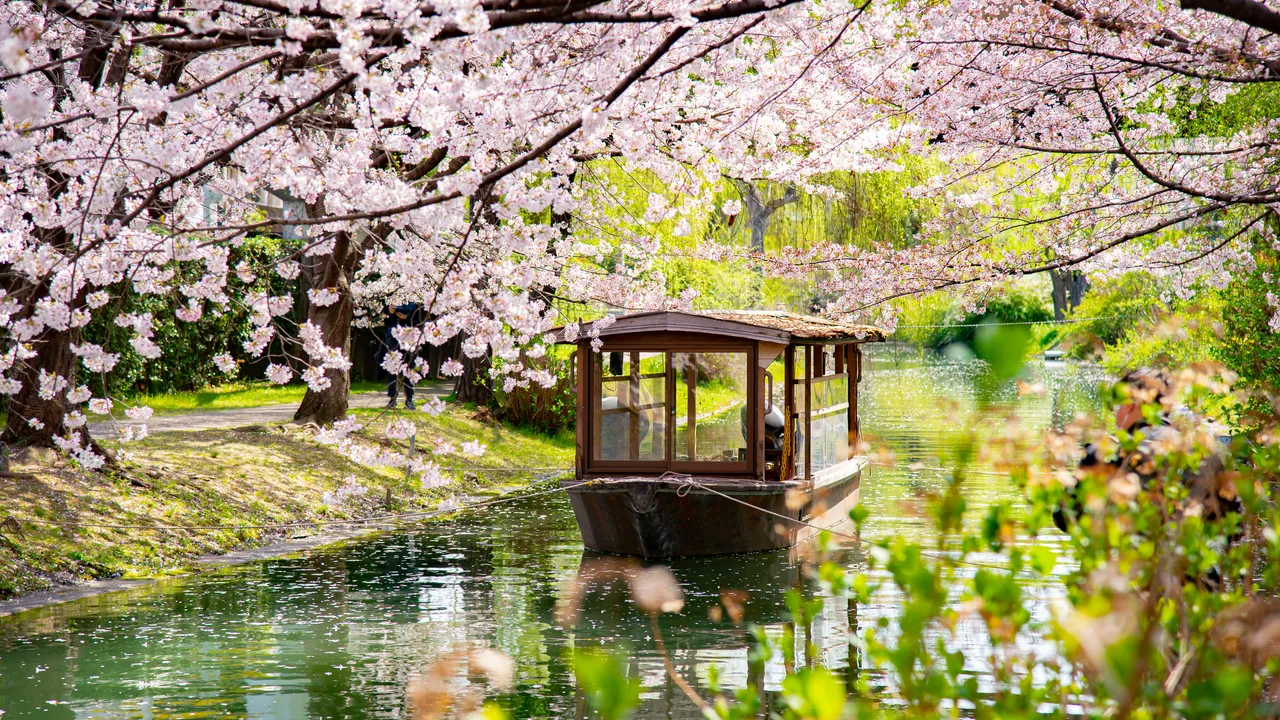Australia’s beaches and coral reefs are the crown jewels of its natural wonders, drawing adventurers, sun-seekers, and marine enthusiasts from around the globe. From the golden sands of Bondi to the kaleidoscopic underwater world of the Great Barrier Reef, this vast continent offers unparalleled opportunities for coastal exploration. In 2025, with sustainable tourism initiatives and improved access, Australia’s beaches and reefs are more inviting than ever. This professional guide provides a comprehensive roadmap for planning a thrilling, culturally rich, and eco-conscious adventure along Australia’s iconic shores and coral ecosystems.
Why Visit Australia’s Beaches and Reefs in 2025?
Australia boasts over 34,000 kilometers of coastline and more than 10,000 beaches, each with its own character—think vibrant surf hubs, secluded coves, and wildlife havens. The Great Barrier Reef, a UNESCO World Heritage Site, is the planet’s largest coral reef system, spanning 2,300 kilometers and teeming with marine life. Beyond these natural wonders, Australia’s coastal cities like Sydney, Brisbane, and Perth blend urban sophistication with laid-back beach culture.
In 2025, Australia is prioritizing eco-tourism to protect its fragile reefs and beaches. Sustainable operators, advanced marine conservation programs, and Indigenous-led tours enhance the experience, making it a perfect time to explore responsibly. Whether you’re snorkeling with manta rays, surfing world-class waves, or relaxing on pristine sands, Australia’s beaches and reefs promise an adventure of a lifetime.
Planning Your Adventure
Visa Requirements
Most nationalities, including those from the US, EU, Canada, and the UK, require an Electronic Travel Authority (ETA) or eVisitor visa for stays up to 90 days. Both are free or low-cost ($20 AUD for ETA) and can be applied for online via the Australian Department of Home Affairs. Processing takes 24–48 hours. Ensure your passport is valid for six months beyond your entry date.
Tip: Double-check visa conditions, as overstays incur penalties. Working holiday visas are available for those aged 18–30 from eligible countries, ideal for longer adventures.
Best Time to Visit
Australia’s coastal climate varies by region, but the dry season (April to October) is ideal for most beach and reef destinations, with temperatures of 20–30°C (68–86°F). Summer (December to February) brings warmer weather (25–35°C/77–95°F) but also humidity and occasional cyclones in northern Queensland. For the Great Barrier Reef, June to October offers clear waters and optimal snorkeling conditions. Southern beaches like Bondi are pleasant year-round, though winter (June to August) can dip to 10–15°C (50–59°F).
Cultural Events: Time your visit for Sydney’s Vivid Festival (May–June), a dazzling light and music event, or the Gold Coast’s Bleach Festival (August), celebrating beach culture.
Safety Considerations
Australia is generally safe, but coastal adventures require precautions:
- Sun Safety: Australia’s UV index is among the highest globally. Use SPF 50+ sunscreen, wear hats, and seek shade between 10 AM and 4 PM.
- Marine Hazards: Follow lifeguard flags on beaches (red and yellow mean safe to swim). Beware of jellyfish in northern waters (November to May); stinger suits are recommended.
- Wildlife: Sharks and crocodiles are rare but present in northern regions. Stick to patrolled beaches and heed warning signs.
- Rip Currents: Swim between flags and, if caught in a rip, swim parallel to the shore until free.
General Tips:
- Purchase travel insurance covering adventure activities (e.g., scuba diving, surfing) and medical emergencies.
- Respect Indigenous lands by following cultural protocols, especially on beaches like Uluru’s coastal counterparts in Arnhem Land.
- Australia is LGBTQ+ friendly, but rural areas may be conservative; discretion is advised outside cities.
Getting There
By Air
Australia’s major gateways are Sydney Kingsford Smith Airport, Brisbane Airport, Melbourne Tullamarine Airport, and Perth Airport. International flights from the US, Europe, or Asia cost $800–$2,000 USD round-trip, with carriers like Qantas, Emirates, and Singapore Airlines. Cairns and Gold Coast airports serve reef and beach destinations directly, with regional flights from Sydney or Brisbane costing $100–$300 AUD.
Tip: Book through Skyscanner or Qantas for deals. Domestic budget airlines like Jetstar and Virgin Australia offer fares as low as $50 AUD if booked early.
By Land or Sea
International land or sea arrivals are rare, but domestic travel to beaches and reefs is easy:
- Trains: NSW TrainLink connects Sydney to coastal towns like Newcastle (2.5 hours, $20 AUD). Queensland Rail links Brisbane to Cairns (24 hours, $100–$300 AUD).
- Buses: Greyhound and Premier Motor Service cover coastal routes (e.g., Sydney to Byron Bay, 12 hours, $80 AUD).
- Ferries: Access islands like the Whitsundays or Rottnest via ferries ($50–$150 AUD round-trip).
Tip: Renting a car ($30–$60 AUD/day) or campervan ($80–$150 AUD/day) is ideal for coastal road trips like the Great Ocean Road or Pacific Coast Highway.
Getting Around
Public Transport
- Sydney: Use Opal cards for trains, buses, and ferries ($2–$5 AUD per trip). The Manly ferry is a scenic ride ($8 AUD).
- Brisbane: TransLink’s go card covers buses, trains, and ferries ($3–$6 AUD). CityCat ferries are great for riverfront beaches.
- Cairns and Gold Coast: Local buses connect beaches and reef tour departure points ($2–$5 AUD).
Domestic Flights
Flights link major coastal hubs (e.g., Sydney to Cairns, 3 hours, $150–$300 AUD). Qantas, Virgin Australia, and Jetstar offer frequent services.
Driving
Australia’s coastal highways, like the Pacific Coast Way or Great Ocean Road, are perfect for self-driving. Roads are well-maintained, but distances are vast (e.g., Sydney to Cairns is 2,400 km). Fuel costs $1.50–$2 AUD per liter. A valid international driver’s license is required.
Tip: Download offline maps, as mobile coverage is patchy in remote areas. Always carry water and check fuel stops.
Must-Visit Beaches and Reefs
New South Wales
Bondi Beach (Sydney)
- Why Visit: Australia’s most iconic beach, famous for surfing, vibrant cafes, and the Bondi-to-Coogee coastal walk (6 km, free).
- Activities: Take a surf lesson ($80 AUD/hour), swim between flags, or join a yoga class on the sand ($20 AUD).
- Dining: Bondi Icebergs offers oceanfront dining (mains $30–$50 AUD).
Byron Bay
- Why Visit: A bohemian paradise with pristine beaches and the Cape Byron Lighthouse.
- Activities: Kayak with dolphins ($70 AUD), hike to the easternmost point of mainland Australia, or relax at Wategos Beach.
- Nightlife: The Beach Hotel serves craft beers ($8–$12 AUD).
Queensland
Great Barrier Reef (Cairns, Port Douglas, Whitsundays)
- Why Visit: A 2,300-km coral ecosystem with 600+ islands and 3,000 reefs. Home to turtles, rays, and 1,500 fish species.
- Activities:
- Snorkeling/Diving: Day trips from Cairns cost $150–$250 AUD, including gear. Dive sites like Agincourt Reef are beginner-friendly.
- Sailing: Whitsundays cruises (2–3 days, $500–$800 AUD) visit Whitehaven Beach, voted the world’s best.
- Eco-Tours: Indigenous-led tours with Dreamtime Dive & Snorkel ($200 AUD) share Aboriginal reef stories.
- Conservation: Choose operators like Passions of Paradise, which fund coral restoration.
Whitehaven Beach (Whitsundays)
- Why Visit: Silky silica sands and turquoise waters make this a bucket-list beach.
- Activities: Day trips from Airlie Beach ($100–$150 AUD) include snorkeling and hilltop lookouts.
- Tip: Visit at low tide for swirling sand patterns at Hill Inlet.
Surfers Paradise (Gold Coast)
- Why Visit: A lively beach with skyscraper backdrops and world-class surf breaks.
- Activities: Surf lessons ($60 AUD), jet skiing ($100 AUD/hour), or skyline views from Q1 Skypoint ($30 AUD).
- Nightlife: Cavill Avenue’s bars offer cocktails ($10–$15 AUD).
Western Australia
Cable Beach (Broome)
- Why Visit: A 22-km stretch of white sand and turquoise waters, famous for camel rides at sunset.
- Activities: Camel tours ($50 AUD/30 minutes), 4WD tours to Gantheaume Point ($80 AUD), or swimming in calm waters.
- Culture: Learn about pearling history at the Broome Museum ($5 AUD).
Ningaloo Reef (Exmouth)
- Why Visit: A lesser-known UNESCO site where you can swim with whale sharks (March–August).
- Activities: Whale shark tours ($400 AUD), snorkeling ($150 AUD), or kayaking coral gardens ($80 AUD).
- Tip: Book tours early, as daily swimmer limits protect marine life.
Victoria
Bells Beach (Great Ocean Road)
- Why Visit: A surf mecca hosting the Rip Curl Pro annually.
- Activities: Surf lessons ($70 AUD), hike the Surf Coast Walk (free), or visit the Twelve Apostles nearby.
- Dining: Torquay’s cafes serve fresh seafood (mains $20–$30 AUD).
Accommodation
- Sydney: Hostels like Wake Up! Bondi Beach cost $30–$50 AUD/night; mid-range hotels like The Sebel Manly are $150–$250 AUD. Luxury options like Park Hyatt Sydney start at $500 AUD.
- Cairns: Backpacker hubs like Travellers Oasis charge $20–$40 AUD; resorts like Pullman Reef Hotel are $200–$350 AUD.
- Gold Coast: Surfers Paradise hostels start at $25 AUD; hotels like QT Gold Coast cost $150–$300 AUD.
- Broome: Guesthouses like Bali Hai Resort are $100–$200 AUD; luxury stays like Cable Beach Club Resort start at $300 AUD.
- Exmouth: Budget campgrounds cost $15–$30 AUD; hotels like Ningaloo Lodge are $120–$200 AUD.
Tip: Book via Booking.com or Airbnb for deals. Coastal areas fill up during school holidays (December–January).
Food and Culture
Cuisine
- Beachside Eats: Fish and chips ($10–$15 AUD), prawn rolls ($12–$18 AUD), and acai bowls ($8–$12 AUD) are coastal staples.
- Fine Dining: Sydney’s Quay serves reef-inspired dishes (mains $40–$60 AUD). Cairns’ Ochre offers bush tucker like kangaroo ($30–$50 AUD).
- Markets: Gold Coast’s Miami Marketta has global street food ($5–$15 AUD).
Culture
- Indigenous Heritage: Coastal Aboriginal groups like the Yugambeh (Gold Coast) and Gija (Broome) share stories through tours ($50–$100 AUD). Respect sacred sites by following guides’ instructions.
- Surf Culture: Surfing is a way of life. Join locals for a “sesh” or attend surf festivals like Noosa Festival of Surfing (March).
- Etiquette: Tipping isn’t expected but 5–10% is appreciated for great service. Remove shoes at Indigenous cultural sites.
Budget and Currency
Australia’s currency is the Australian Dollar (AUD), with $1 USD ≈ 1.50 AUD in 2025. ATMs are widespread, and cards are accepted everywhere, though small vendors prefer cash.
Sample Daily Budget (per person):
- Budget: $80–$120 AUD (hostels, street food, public transport)
- Mid-Range: $200–$300 AUD (hotels, restaurant meals, tours)
- Luxury: $400+ AUD (resorts, private tours, fine dining)
Tip: Save by cooking in hostels or campervans and booking tours in advance.
Practical Tips
- Language: English is universal, but learn slang like “arvo” (afternoon) or “brekky” (breakfast) for fun.
- Health: No vaccinations are required, but carry sunscreen and insect repellent. Medicare covers emergencies for some nationalities (e.g., UK, NZ).
- Connectivity: Telstra and Optus SIMs cost $20–$40 AUD with 10–20 GB data. Wi-Fi is common in cities but patchy in remote areas.
- Packing: Pack swimwear, reef-safe sunscreen, a hat, and layers for cooler evenings. Water shoes protect against coral cuts.
Sample 14-Day Itinerary
Day 1–3: Sydney
Surf at Bondi, walk to Coogee, and dine at Icebergs. Take a Manly ferry and explore Shelly Beach.
Day 4–5: Byron Bay
Kayak with dolphins, hike Cape Byron, and relax at Wategos. Drive or bus to Gold Coast.
Day 6–7: Gold Coast
Surf at Surfers Paradise, visit Q1 Skypoint, and party at Cavill Avenue. Fly to Cairns.
Day 8–10: Great Barrier Reef (Cairns/Port Douglas)
Snorkel Agincourt Reef, join an Indigenous eco-tour, and explore Daintree Rainforest. Sail to the Whitsundays.
Day 11–12: Whitsundays
Visit Whitehaven Beach, snorkel Heart Reef, and camp on Hook Island. Return to Airlie Beach.
Day 13–14: Brisbane or Sydney
Relax at South Bank Beach (Brisbane) or revisit Bondi. Depart via Brisbane or Sydney Airport.
Extension: Fly to Broome (3 days) for Cable Beach and Ningaloo Reef adventures.
Final Thoughts
Australia’s beaches and reefs are a playground of sun, surf, and marine wonders in 2025. From the vibrant energy of Bondi to the tranquil beauty of Ningaloo, this journey blends adventure with awe-inspiring nature. By choosing sustainable operators and respecting Indigenous cultures, you’ll contribute to preserving these treasures for future generations.
Plan with resources like Tourism Australia or operators like Intrepid Travel for guided experiences. Whether you’re diving into the Great Barrier Reef or sunset-strolling on Whitehaven, Australia’s coastal charm will leave you spellbound.
Happy travels Down Under!





Leave a Reply